San Francisco International Airport
When the SFO Museum began Twittering about their upcoming Japanese Toy exhibit, I knew I needed to see it. Sadly, it is behind TSA. It is in Terminal Three for all you lucky people flying in and/or out of SFO in the next 6 months.
I contacted the museum, and Exhibits Curator, Nicole Mullen, was kind enough to get me past TSA to view the exhibit.
I was a kid in a candy shop. I have been a fan of Astro Boy and Ultraman since I was a child. I have a huge collection of both, to say nothing of my Robot and Godzilla collection (all from Japan).
This collection was put together from private collectors that include Boss Robot Hobby, The California Academy of Sciences, Chizuko Kuroda, Kalim Winata, Kimono My House, Mark Nagata, Reed Darmon, Rory Yellin and Sanrio.
Sanrio donated a huge Hello Kitty, as well as, a dress made of pink and white stuffed Hello Kitty’s. Being a Badtz Maru fan myself, I am afraid I didn’t get any Hello Kitty photos, my apologize to her fans.
The exhibit is titled Japanese Toys! From Kokeshi to Kaiju and runs through April of 2014. Beautifully laid out by category, the exhibit covers an amazing diversity of toys and history. There is also a wonderful handout that accompanies the exhibit that you can pick up.
As you enter the exhibit from the street side you are first greeted by this huge Dog. (don’t worry, I thought it was a cat too). This dog was done by a member of the exhibits staff, Steven Villano.
Colorful, mythical Japanese characters have traditionally appeared in the form of papier-mâché, a centuries-old craft technique in Japan. Guardian dogs are among some of the most popular papier-mâché figurines.
Many legendary stories about guardian dogs developed during the Edo period (1615–1868) in Japan. One story tells the tale of Kobo Daishi (774–835), a Buddhist monk who spent the night at a local farmer’s home during a pilgrimage. This courteous farmer told Daishi that he was troubled by boars in his fields and asked him for a protective amulet. Kobo Daishi allegedly created a paper-dog charm, which he folded, sealed, and gave to the farmer to hang in his fields to protect his crops. When the farmer, curious about the highly effective amulet, eventually opened it, the paper dog flew away. From the SFO Museum Website
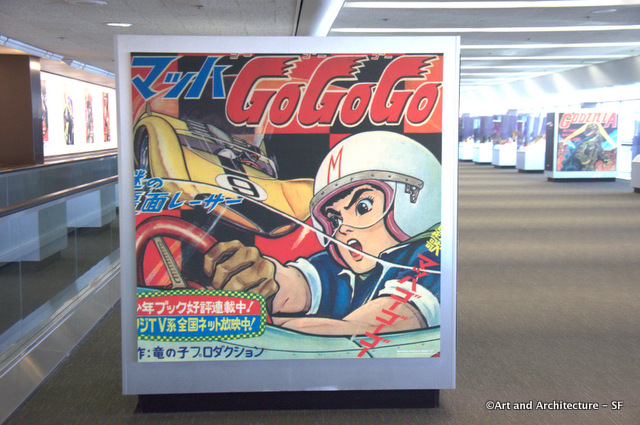 If you were a Saturday cartoon nut, you should recognize Speed Racer. Introduced in 1966 by Tatsuo Yoshida as car racing manga, Mach Go Go, the figure was influenced by American culture so the characters were western in appearance. Mach Go Go was syndicated for TV in the US in 1967 as Speed Racer. Although not as technically advanced as cartoons in the US, the moral themes, the complex plots and the unique sound effects and camera angles were very different from cartoons popular at the time.
If you were a Saturday cartoon nut, you should recognize Speed Racer. Introduced in 1966 by Tatsuo Yoshida as car racing manga, Mach Go Go, the figure was influenced by American culture so the characters were western in appearance. Mach Go Go was syndicated for TV in the US in 1967 as Speed Racer. Although not as technically advanced as cartoons in the US, the moral themes, the complex plots and the unique sound effects and camera angles were very different from cartoons popular at the time.
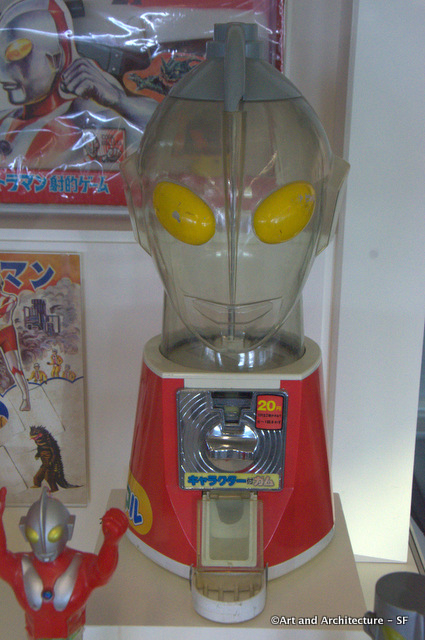 Ultraman’s central characters were created by Eiji Tsuburaya a pioneer in special effects who was responsible for bringing Godzilla to life in 1954. To learn more about Ultraman you can read about him at the SFO site here.
Ultraman’s central characters were created by Eiji Tsuburaya a pioneer in special effects who was responsible for bringing Godzilla to life in 1954. To learn more about Ultraman you can read about him at the SFO site here.
Kawaii means cute or childlike, a term used for the obsession that the Japanese tend to have with cutesy characters, toys, stationary, housewares and fashion.
With the nuclear bombings of Hiroshima and Nagasaki and the Lucky Dragon 5 incident still fresh in the Japanese consciousness, Godzilla was conceived as a metaphor for nuclear weapons. As the film series expanded, some stories took on less serious undertones portraying Godzilla as a hero while other plots still portrayed Godzilla as a destructive monster. The other character you see here is Mothra an adversary of Ultraman, as was Godzilla.
The traditional Daruma doll represents the silhouette of Bodhidharma in deep meditation, sitting in the customary zazen position. Daruma is closely associated with a beloved Japanese proverb, Nana korobi yaoki, which states, “Fall down seven times, get up eight”. The Daruma doll’s unique rounded shape allows it to return to its original position even if knocked over, representing such persistence.
Yokai Monster Figures
Kokeshi, probably the most beloved folk dolls in Japan, stem from a tradition that dates at least to the 1800s. Craftsmen first made kokeshi in the northern region of Tohoku during the cold winter months. Kokeshi dolls are characterized by their lack of arms and legs and the brightly painted floral or geometrical designs on their cylindrical bodies. The process for making these rounded, wooden dolls is similar to the lathe-turning method employed to make legs for chairs or tables. These dolls served as simple toys for children and were also purchased at hot springs as souvenirs. Over time, the popularity of these figures spread and craftsmen in other regions began to make the dolls. Each area developed its own unique decorative traits allowing one to distinguish a doll’s region of origin. – From the SFO Museum Website.
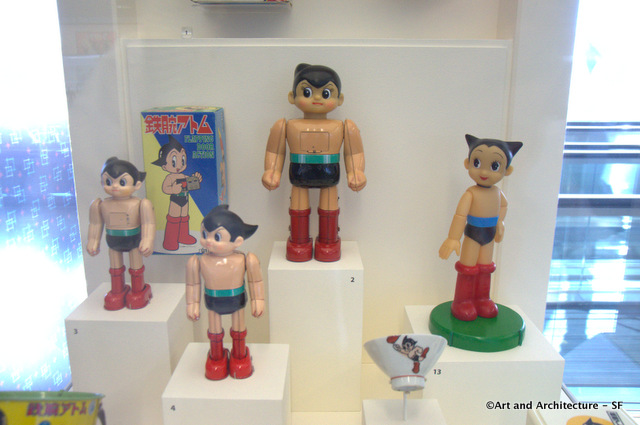
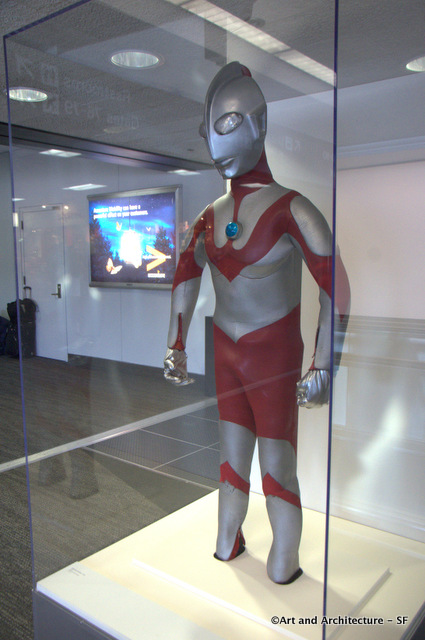
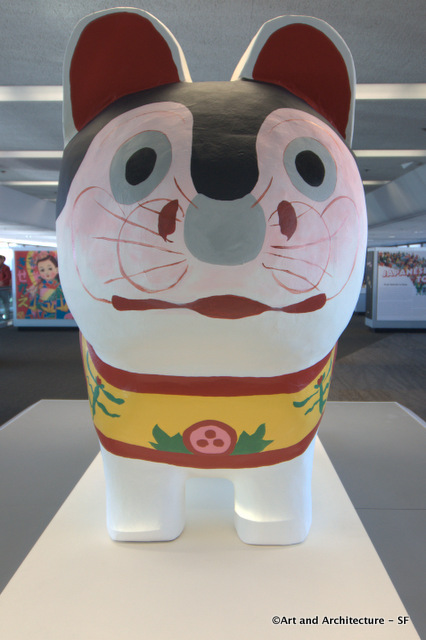
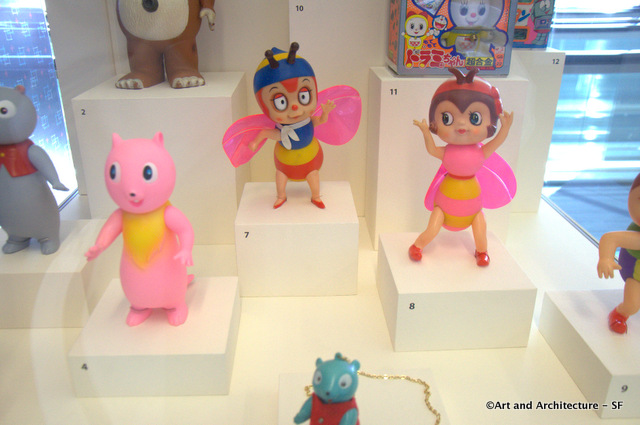
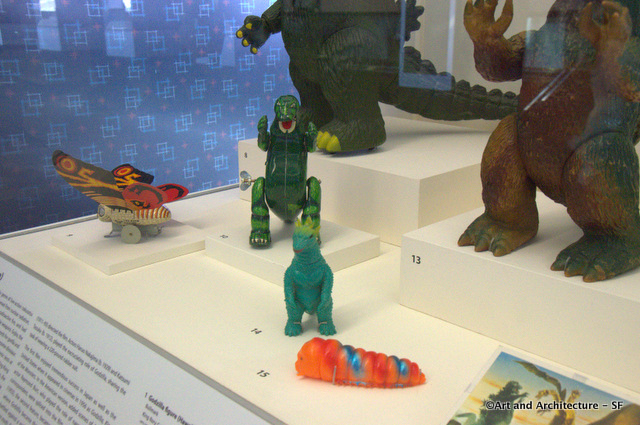
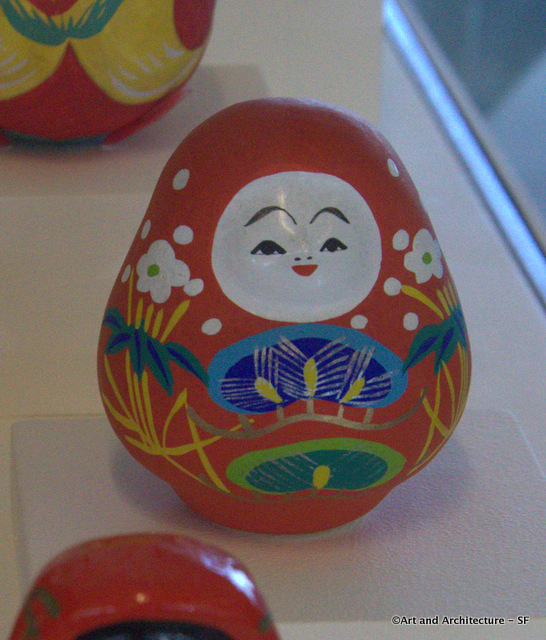
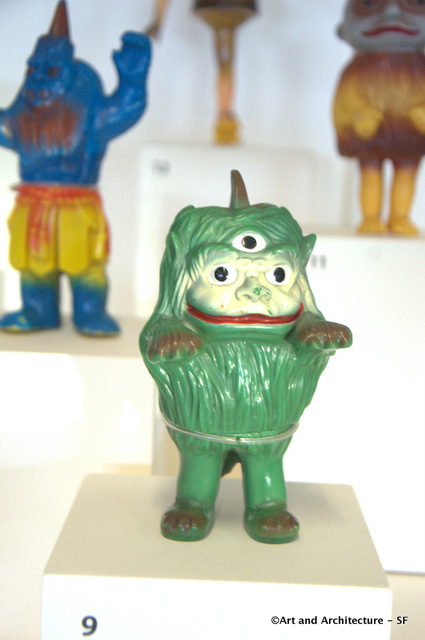
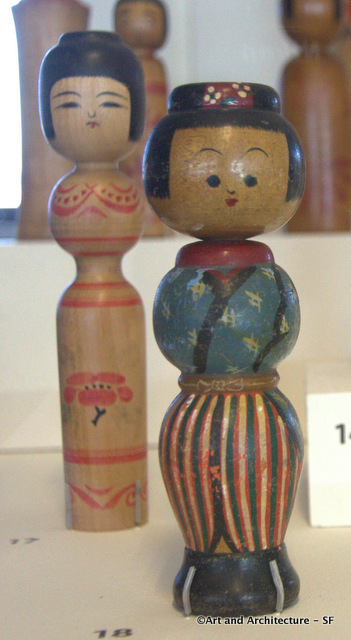
I’m always impressed by the art exhibits at SFO. This is really cute. I know zero about Japanese made toys except the kokeshi dolls. The international terminal currently has a fine exhibit on Philippine baskets.